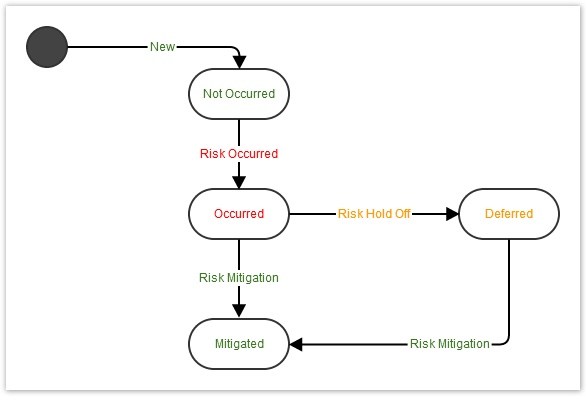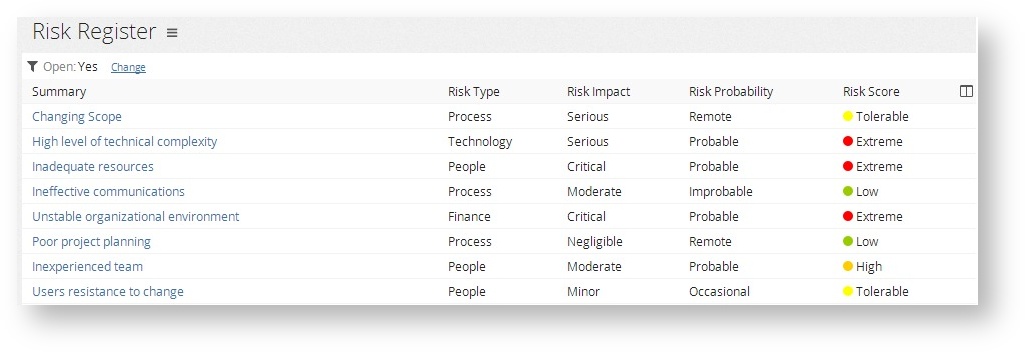Risk
Risks are usually caused by uncertainty – unpredictability in the project requirements, legal liabilities, unplanned resource loss, financial state of the organization or market, force majeure, competition, etc... The objectives of Risk Management are to decrease the probability and impact of negative events on various organizational and project activities.
Celoxis provides a risk management process, which you can directly use for your projects.
A risk typically has the following states: Not Occured, Occured, Deferred and Mitigated. Each risk also has a Probability, Impact and a Risk Score associated with it.
Risk App
Each risk has the following custom fields:
- Risk Probability
- Risk Impact
- Risk Score
Workflow Steps:
- You can identify all the risks in your system (organizational or project). Each risk will have a probability of occurrence and associated impact. Based on these parameters, Celoxis will calculate a risk score. All risks entered are in 'Not Occurred' state.
- Once a risk occurs, the risk is moved to 'Occurred' state and is assigned to the person responsible for handling the risk.
- The Risk can then move to any of the following states:
- 'Mitigated' because the impact of the Risk is reduced. The State Manager is responsible for this risk in this state.
OR - 'Deferred' because it is unlikely to occur now or impact the project progress. The State Manager is again responsible for this risk in this state.
- 'Mitigated' because the impact of the Risk is reduced. The State Manager is responsible for this risk in this state.
- A 'Deferred' risk can also be 'Mitigated' at a later point in time.
Celoxis provides a predefined Risk Register Report where you can view all the risks (organizational or project specific) and their impact, probability i.e. likelihood and score.

